One of the best known, and in fact the oldest type of water saving, is rainwater harvesting. For hundreds of years people have collected rainwater off roofs and stored it in some form of container to re-use.
Not only is this environmentally a good idea, but it also saves money on mains water supply costs. If rainwater can be harvested and stored during wet periods, it provides a source of water supply to see you over the dry periods when plants (whether food plants or ornamental) would otherwise die from lack of water.
Uses for rainwater harvesting
Domestic
The main domestic use for rainwater harvesting traditionally is for garden irrigation. The water butt combined with a downpipe diverter is the most basic form of domestic rainwater harvesting. Water butts don’t have to be boring black tanks, though – take a look at our range of water butts disguised as garden features such as barrels and classical urns. They will enhance your garden and your environmental impact, and are fully recyclable when they reach the end of their service life.
However, rainwater harvest tanks can also be used for toilet flushing in a similar way to greywater. It can also be used for car washing or similar purposes.
Rainwater, well filtered, can also be used for washing machines and in hard water areas this is a great advantage as it not only needs less detergent, being naturally soft water, but also prolongs the life of the machine due to lack of limescale.
Agricultural and horticultural
Provision of rainwater harvest tanks on farms is invaluable as there are many uses for rainwater.
- Animal husbandry – as rainwater is pure enough for livestock drinking water
- Washing down of livestock sheds and yards
- Irrigation
- Fire fighting
Nurseries, garden centres, tree nurseries – are other types of business who would benefit from rainwater harvesting tanks.
Commercial / Industrial
Rainwater harvest tanks can be used in commercial or industrial premises, mainly for toilet flushing, but they could also be used to top up fire water tanks.
For fire fighting use, it is essential to maintain a full tank, so be aware of this if water is drawn off for any other purpose. If used for a sprinkler system, fine filtration would be needed to avoid clogging the heads, but this is easily available and would form part of the supply system. A calmed inlet kit is recommended to prevent stagnation of stored water.
Types of rainwater harvesting tanks
Basically, tanks for rainwater harvesting come into two categories: Underground or above ground. Here is a bit more detail and some information on different tanks that would be suitable for this purpose.
Above ground – commercial / industrial / agricultural
Where you have a large roof area it is ideal to harvest rainwater that would otherwise go into stormwater drains or cause flash flooding in your yard.
The plastic tanks most suitable for this are the large capacity vertical water tanks, fitted with the pipework and rainwater filters to divert and harvest the water straight from the roof guttering.
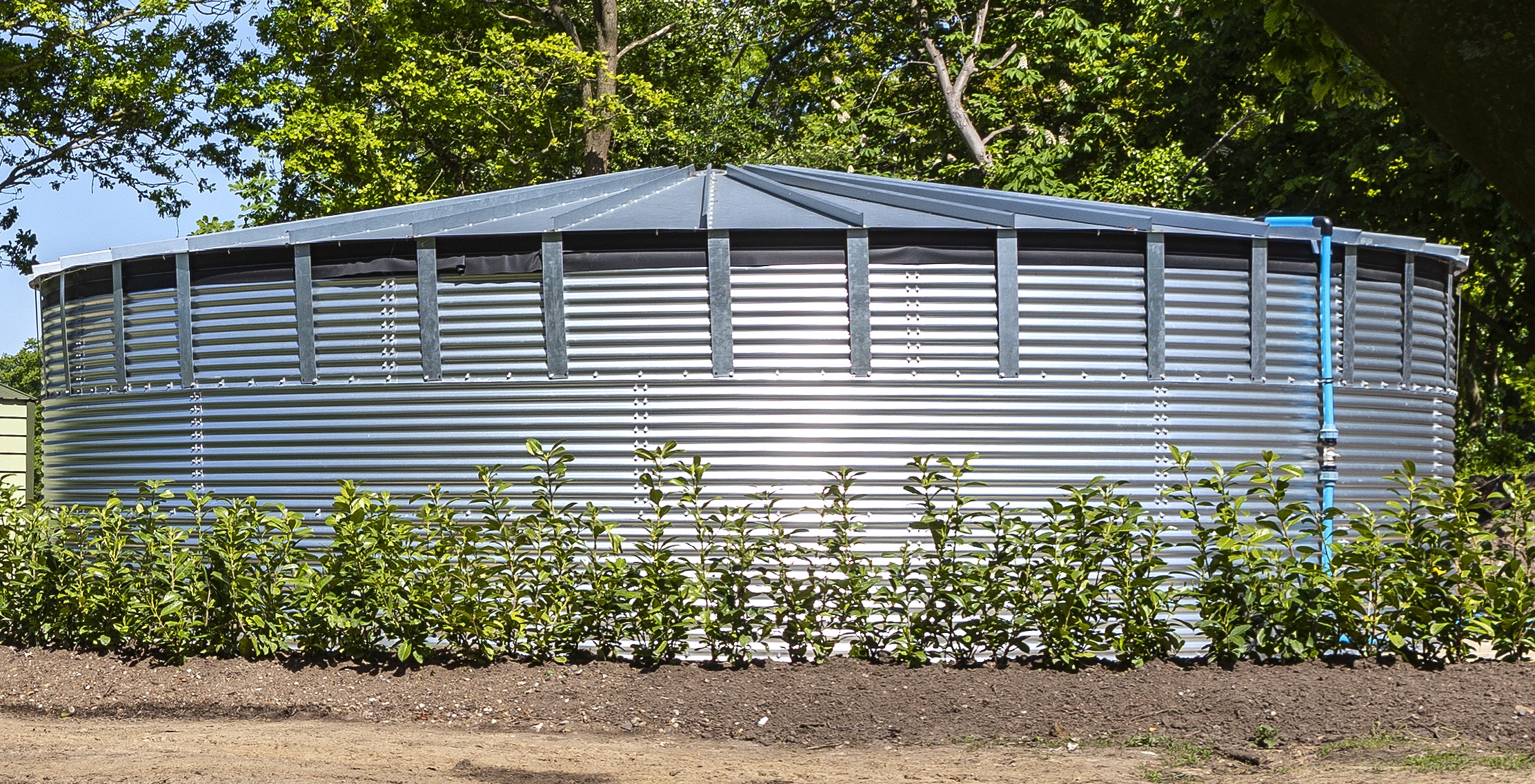 Sectional steel tanks also make very good rainwater harvest tanks, and are available in a huge range of sizes, from less than 2000 litres up to 1.274 million litres or even larger (ask for details)! One key advantage of these is that they are sectional, and therefore can be transported to site easily and installed on location reducing the need for cranes or heavy lifting equipment. The steel tanks require a liner, and there are a three main options for these, Butyl, EPDM (ethylene propylene diene monomer – which is a form of synthetic rubber) or PVC. Check with us to find out which is the most suitable for your needs.
Sectional steel tanks also make very good rainwater harvest tanks, and are available in a huge range of sizes, from less than 2000 litres up to 1.274 million litres or even larger (ask for details)! One key advantage of these is that they are sectional, and therefore can be transported to site easily and installed on location reducing the need for cranes or heavy lifting equipment. The steel tanks require a liner, and there are a three main options for these, Butyl, EPDM (ethylene propylene diene monomer – which is a form of synthetic rubber) or PVC. Check with us to find out which is the most suitable for your needs.
Underground – commercial
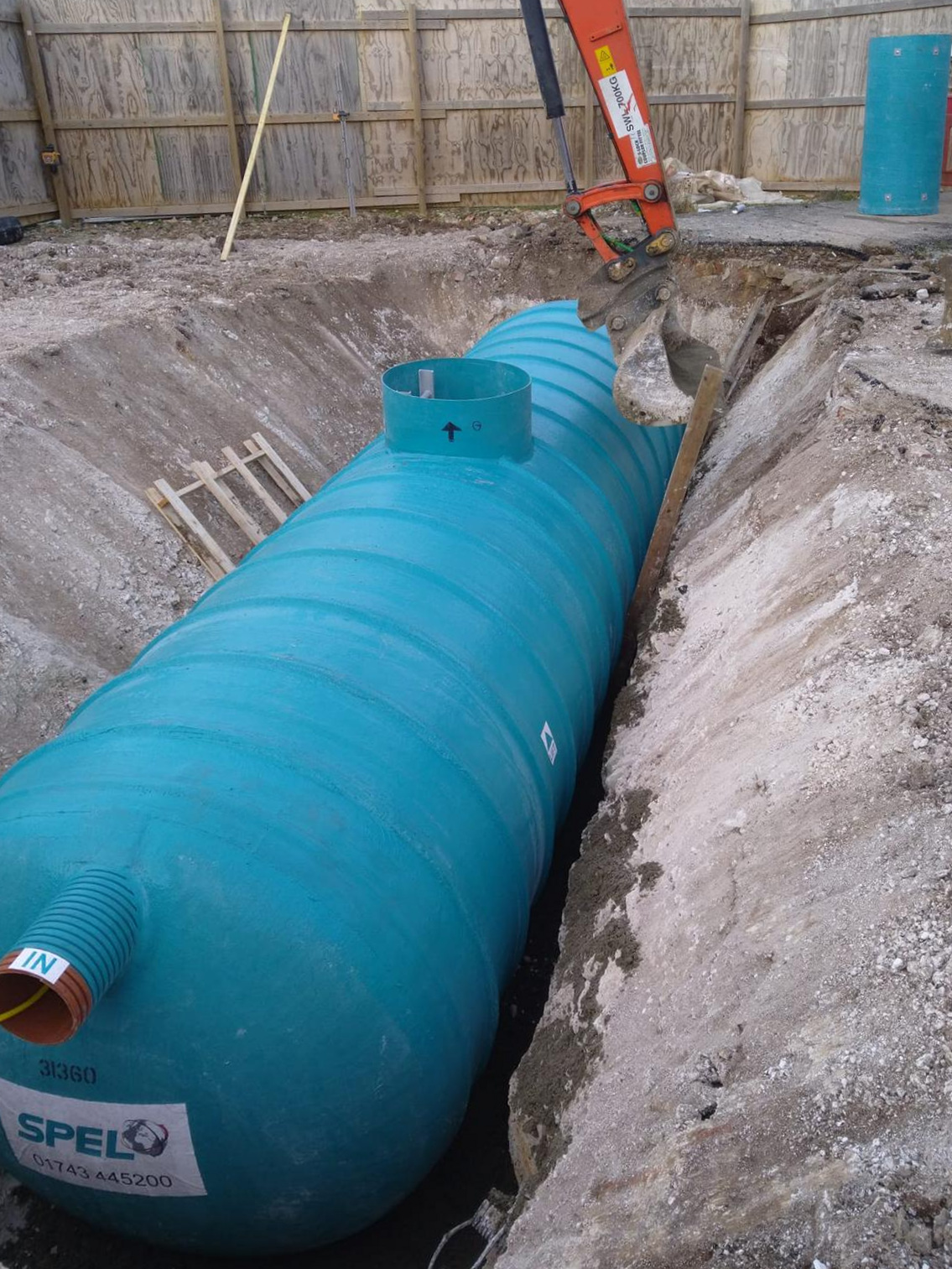 There are situations where underground tanks are more suited, and Tanks-UK can offer a range of sizes of plastic underground tanks or the SPEL range GRP tanks for maximum service life – and these go up to large capacities. On the website we have the details for up to 20,000 litres, but they are available in larger capacities – please ask for details. Underground plastic water tanks are specially reinforced (integral to the design) to withstand ground movement, and the GRP type are designed to take this type of pressure.
There are situations where underground tanks are more suited, and Tanks-UK can offer a range of sizes of plastic underground tanks or the SPEL range GRP tanks for maximum service life – and these go up to large capacities. On the website we have the details for up to 20,000 litres, but they are available in larger capacities – please ask for details. Underground plastic water tanks are specially reinforced (integral to the design) to withstand ground movement, and the GRP type are designed to take this type of pressure.
Above ground – domestic
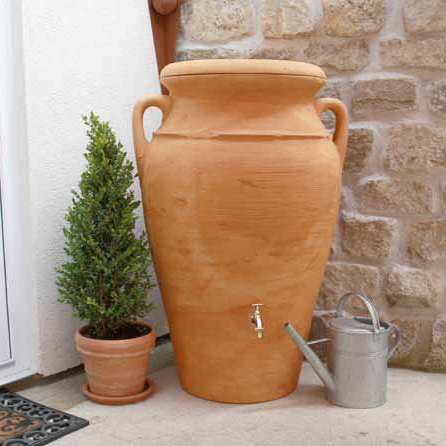
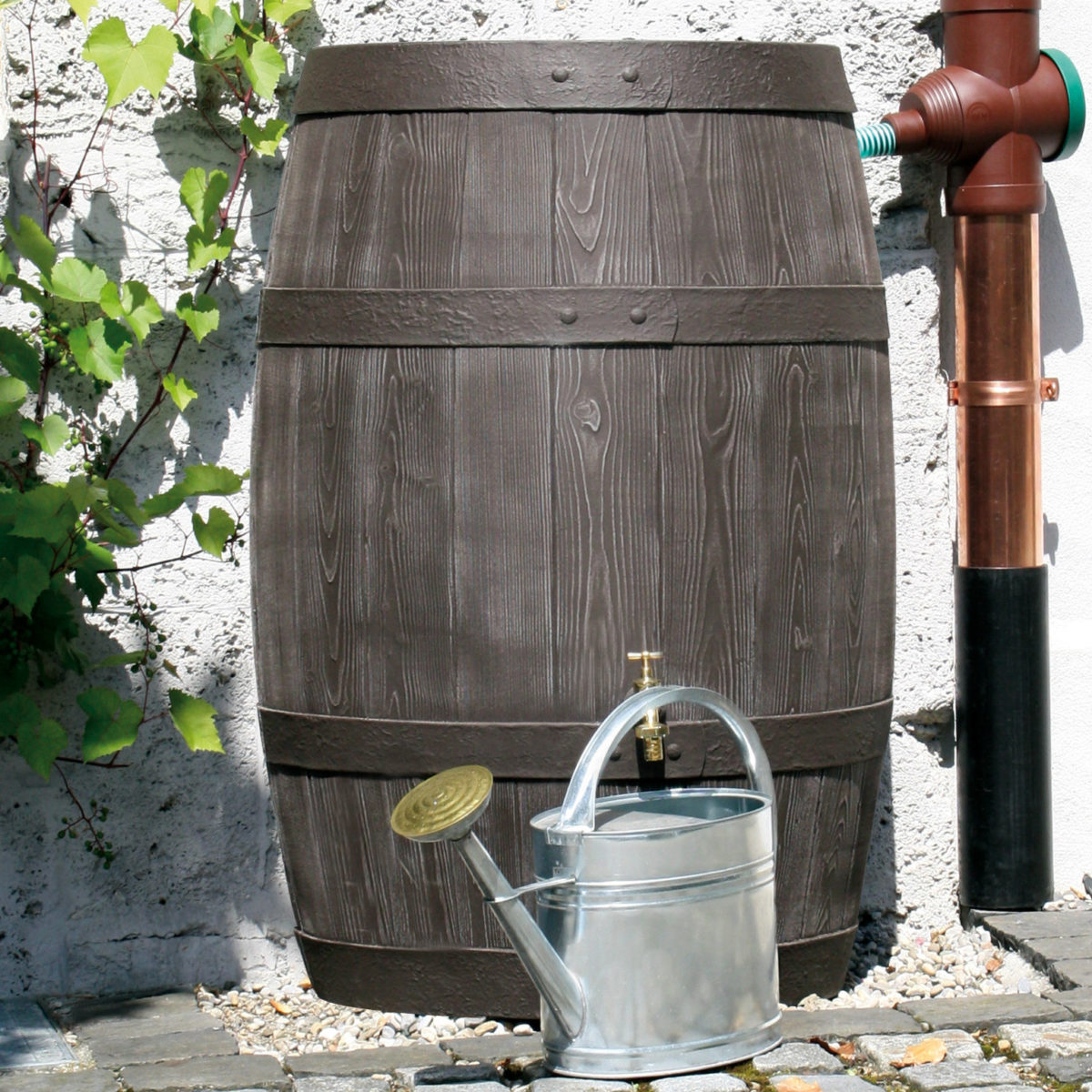
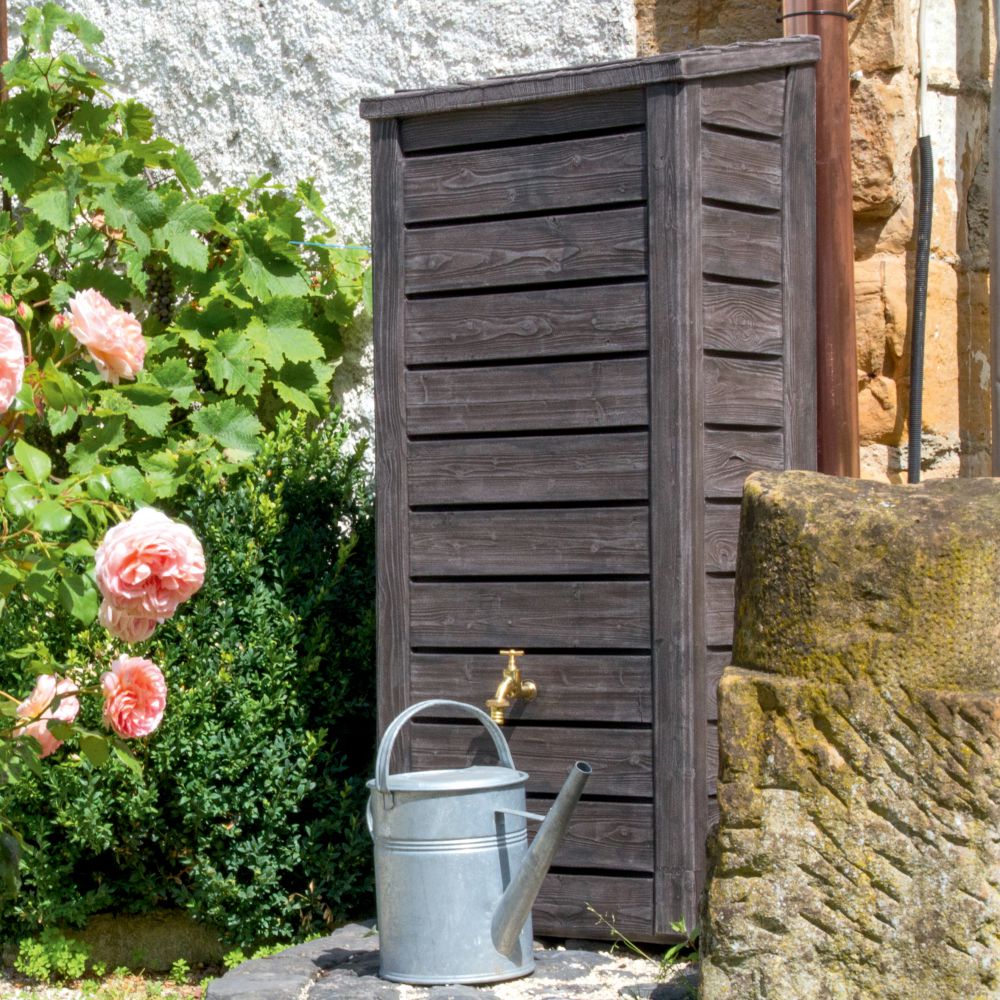
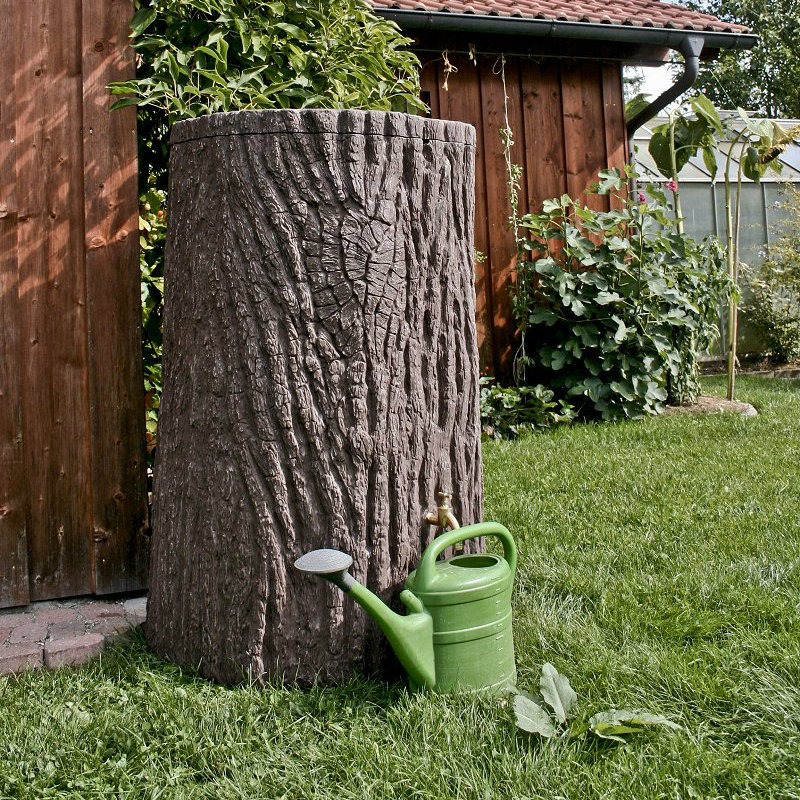 Starting with the feature water butts:
Starting with the feature water butts:
- Burgundy is a very realistic looking ‘oak barrel’.
- Evergreen is designed to look like a tree stump, with a realistic bark effect finish.
- Helena is, by appearance, a classical Greek urn.
- Norway has a timber slat effect, and a sloping ‘roof’ rather like a small shed.
Looking for something with larger capacity, the 1100 litre vertical slimline tank from Harlequin would be ideal to fit into narrow spaces beside a house, as it is only 690mm wide. Or, if you prefer a cylindrical tank, the Enduramaxx range come in variety of sizes suitable for domestic use.
Underground – domestic
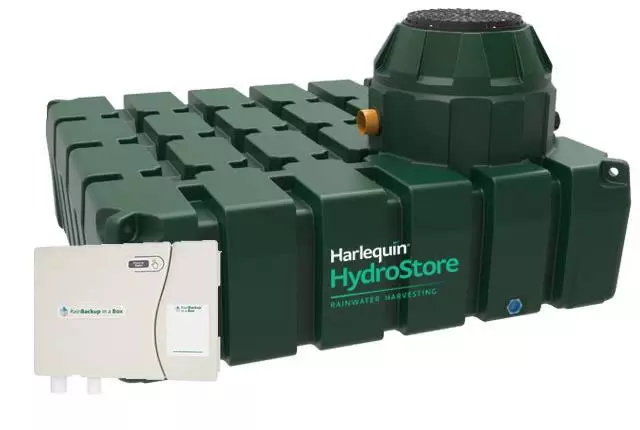 Where you want to harvest rainwater for more than garden irrigation purposes an underground tank is possibly the best overall solution. The Harlequin Home Harvest range are available in several sizes, and are also modular so that you can link up more than one tank. These tanks have a control panel – for more details look out for our next blog.
Where you want to harvest rainwater for more than garden irrigation purposes an underground tank is possibly the best overall solution. The Harlequin Home Harvest range are available in several sizes, and are also modular so that you can link up more than one tank. These tanks have a control panel – for more details look out for our next blog.
Rainwater can be used domestically not only for toilet flushing (the most common use, for water saving) but also for washing machines. In fact, in hard water areas rainwater use reduces the amount of detergent needed, as it is naturally soft water; and it may extend the life of your washing machine by reducing the risk of limescale deposits. Filtration is good enough for these uses, but rainwater shouldn’t be used for human washing or drinking purposes as it still may contain bacteria or other micro-organisms which can be a risk to health.
For garden irrigation purposes there is a similar range, but designed specifically for the purpose – the Harlequin Garden Harvest tanks. Both Home Harvest and Garden Harvest come as complete kits for their specific purpose.
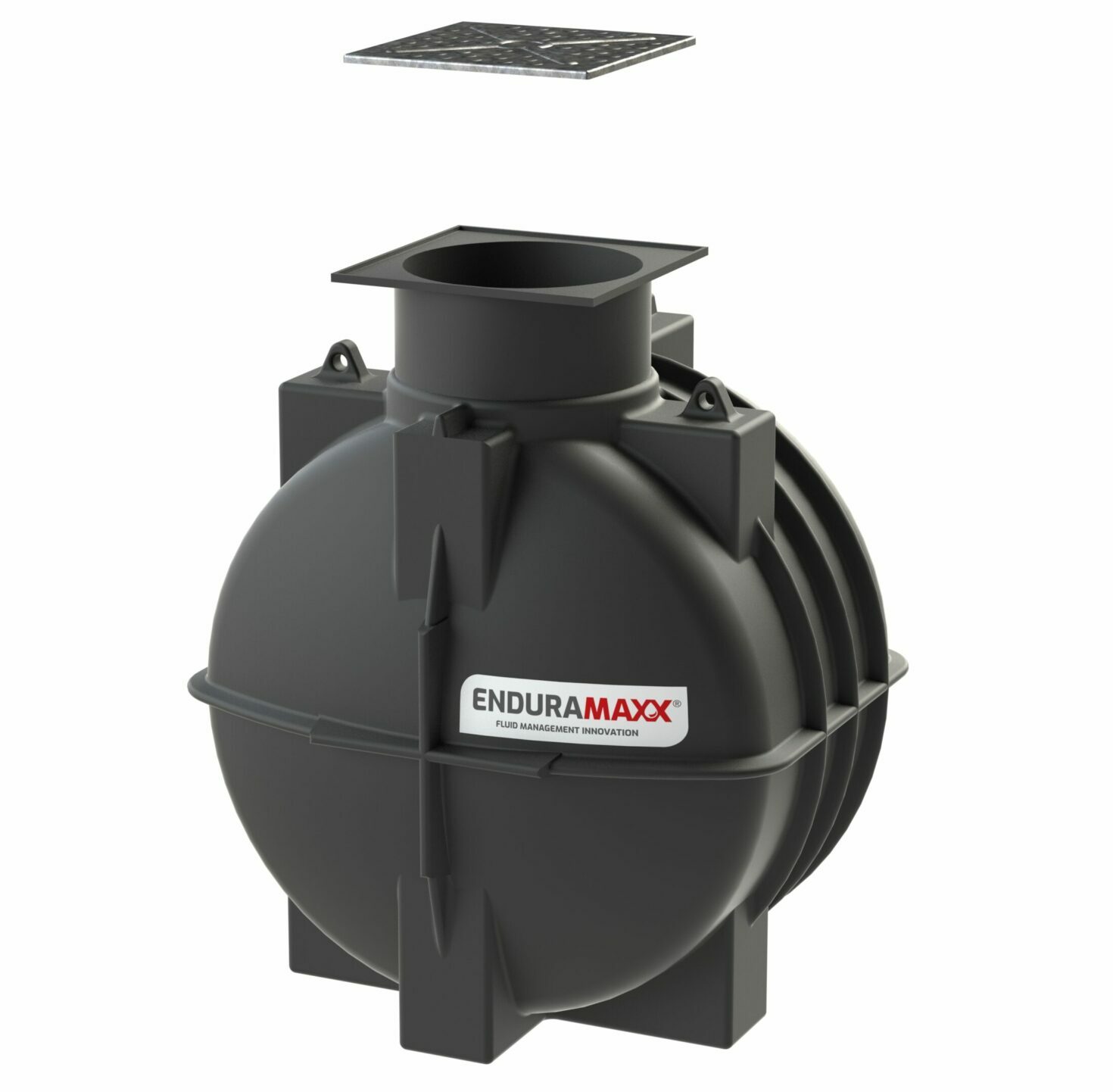 There are also plain underground rainwater tanks which can be supplied with the addition of pumps and pipework for an irrigation system, or to top up ponds or power water features, for instance.
There are also plain underground rainwater tanks which can be supplied with the addition of pumps and pipework for an irrigation system, or to top up ponds or power water features, for instance.
Just give us a call on 01953 665940 or email info@tanks-uk.com with your requirements and we’ll send you a quote.

